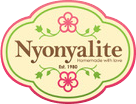满$35即享免费配送。
If you've ever tasted the rich complexity of Nyonya food, chances are you've enjoyed the magic of galangal—even if you didn't know it. This humble root is a cornerstone in many Nyonya recipes, lending its distinct fragrance and warming flavor to some of the cuisine’s most iconic dishes.
What Is Galangal?
Often mistaken for ginger, galangal is a rhizome with a tougher skin and a sharper, citrusy, and pine-like flavor. Where ginger is warming and slightly spicy, galangal hits you with a cleaner, more sweet and floral aroma. In short, galangal brings the depth and brightness that many Nyonya dishes are known for.
Galangal is also commonly known as blue ginger—a literal translation of its Chinese name (南薑), and referred to as lengkuas in Malay. It’s a familiar ingredient in Southeast Asian kitchens, but in Nyonya cooking, it takes on a particularly important role.
The Role of Galangal in Nyonya Cooking
Peranakan cuisine, or Nyonya food, is all about balance—spice, sweetness, sourness, and umami all in one bite. Galangal is essential for that balance. It’s not just a background note; it’s the ingredient that ties everything together.
You’ll often find galangal used in:
-
Ayam Buah Keluak – Galangal balances the earthiness of the keluak nuts and the richness of the braised chicken.
-
Nyonya Laksa – That addictive broth? Galangal is part of the rempah (spice paste) that gives it its signature depth.
-
Pongteh Stew – Add galangal into the stew to further elevate the sweet flavour of this dish.
-
Sambal Belacan and Rempah Pastes – Almost all authentic nyonya recipes for spice pastes include galangal alongside shallots, garlic, and lemongrass.
- Beef Rendang – This rich dish depends on galangal to deepen the flavor of its coconut-spice base.
Loved Across Southeast Asia
Galangal isn’t just a Nyonya favorite. It plays a key role in other Southeast Asian dishes too:
-
Tom Yum Soup (Thailand) – Galangal gives this famous spicy and sour soup its distinct zing, balancing chili heat with citrusy sharpness.
-
Thai Curries (Green & Red) – Galangal is part of the curry paste, contributing to the layers of flavor that make Thai curries so irresistible.
Whether it’s Thai or Nyonya, galangal brings harmony to bold flavors.
Why You Shouldn’t Skip It
Galangal isn’t just a spice—it’s tradition. For generations, Peranakan home cooks have hand-pounded galangal into pastes, giving their cooking that unmistakable Nyonya flavor. It’s the difference between a dish that tastes okay and one that tastes like home.
At Nyonyalite, we use galangal in our pastes just like how our grandmothers did—fresh, fragrant, and full of character. Whether you’re whipping up Ayam Buah Keluak or Laksa, our pastes bring out the soul of nyonya food without hours in the kitchen.
Where to Get Galangal (or Skip the Hard Work!)
Fresh galangal can be found in Asian supermarkets, but it can be tricky to prepare—tough to slice and hard to blend. That’s why many modern home cooks turn to ready-made Nyonya pastes that have done the hard work for you. Our Nyonyalite pastes are packed with real galangal, hand-prepared and ready to use.
Final Thoughts
Galangal may not be the flashiest ingredient, but in nyonya recipes, it’s irreplaceable. It’s part of what makes Peranakan food so layered, so comforting, and so loved—not just in Singapore and Malaysia, but across Southeast Asia.
So the next time you taste a rich laksa broth or a slow-braised buah keluak, remember: galangal is working behind the scenes, delivering all that unforgettable flavor.

